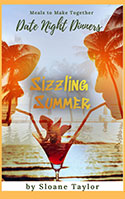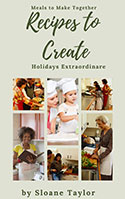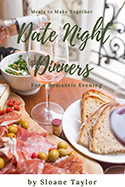Archive for the 'It’s All About Writing' Category
Inspiration, sometimes known as The Whack Against the Head
April 27, 2006 | It's All About Writing
I’ve been in a real writing slump this past month. Actually two. It was driven home when Studly noticed something was wrong and sat me down for a talk.
“Okay, Babe, what’s going on?”
“Nothing.” No truer words were ever spoken.
“You’re not yourself. What’s going on with the new book?”
“The exact same 1200 words as before.”
“Drag it out and let’s talk about it.”
After much whining and procrastinating I dragged out my two wrinkled pages of crap and handed them over.
“Aah, yeah. I see your problem.” Ya gotta love a guy of few words. “It’s just not clear.”
“Actually, I thought it just stunk.” Okay, maybe I’m being a bit harsh on myself, but the self-pity route seemed a good choice even if it was non-productive.
“First off you can’t have the guy’s dick “jumping to life”. Dicks just don’t do that. And if they did it would hurt.”
“G told me the same thing, or maybe it was Melissa.” His eyebrow cocked and the yummiest look swept into his chocolate eyes. “G is a woman, Studs, from my critique group.”
“Good. Now let’s get back to work.”
And so we did for over an hour. Studly has an amazing eye for sensitivity and logic in writing. Then again, Studs is a pretty amazing guy all around.
The next morning I sent off two samples of the first chapter to Beth and Yasmine. Beth liked the first while Yasmine is still scrutinizing my measly offerings. They both agreed one specific line had to be worked in somehow.
The first piece was sassy and bold, a style more suited to my nature per Beth. The second was refined and laid back. The characters in the first of this four book series were that way. Not these two new ones. They are smart, streetwise, and well-educated. Therefore the style of the book has to be action filled.
Now here’s my point. Are you ready? Grab my hand and we’ll take this leap of faith together.
You have to write your book true to your characters. I guarantee you it will not work if you force a style onto your hero and heroine that isn’t natural to them. Nope! I hear your refusal to accept the inevitable and I’m not listening.
Trust me on this – you will not have the inspiration required to write 50,000 plus words if you don’t listen to your lead characters. They know what they’re talking about.
Auf Wiedersehen, I’m off to Austria to help Wolfe and Eleanor sort out the fiasco they’ve gotten themselves into!
Sloane
Your Place or Mine?
March 24, 2006 | It's All About Writing
The enraptured sigh, the long staring gaze, or quick hops in the sack testing multiple positions are not what writing sexual tension is all about. For each type of romance there is a draw between your hero and heroine. If you don’t have the tension, you ain’t got a sellable romance.
Sexual tension can be broken down into the explicit meaning of each word.
SEXUAL: of or involving sex which equates to wanting it.
TENSION: mental or emotional strain which equates to not being able to get it.
So what you have here is a great emotional strain to have sex with a specific person, but it’s not happening. This is what you must create between your characters in your story. The longer you delay the actual act, and increase the attraction, the better your readers will love the story.
How do you build Sexual Tension? In one word, awareness. Each of your characters needs to notice small things about the other. Sure Cassie can appreciate the bulge in Clive’s jeans while he’s admiring her breasts, but it’s not all tits and ass.
You must tease your reader while your characters are slowly becoming more aware of each other. Consider it a form of foreplay. Such as;
Cassie glanced down and was startled by the bulge in his jeans. Her eyes widen in admiration. Clive tweaked a smile, knowing what she’s doing, though she wouldn’t admit it, even to herself.
It’s more than body parts. You also need to write more than the physical. Each character must be aware of the others values, good and bad;
A warmth spread through Clive as Cassie clasped the tiny hand of the lost child.
Cassie’s lips tightened when Clive cursed at the driver who had successfully run them off the road.
Our couple has become more aware of each other and therefore we have successfully drawn them closer.
Think of it this way – Do you remember when you first fell in love? Did you notice everything about this new person all at once? Or did the scent, strength, and mannerisms dribble into your conscientiousness a drop at a time? More than likely the nature and character of your other half slowly made itself known to you.
This is how you need to write sexual tension, a bit at a time. As your story progresses the awareness increases. It may go on for pages, even chapters, until Clive and Cassie are so attuned they have to make love.
Another important key is that by now your reader is begging for Clive and Cassie to make love and live the happily ever after. It’s up to you, the author and the genre you write, to decide how explicit the love scene will be.
If you’re shy, you can bring your couple to the location – bed, couch, floor – then write a few lines before the door closes and provides them with the privacy they deserve. Or you can write it all, leaving nothing to the reader’s imagination. Either way, it must be fulfilling to the characters and more importantly, to your reader.
Do not cheat your reader. They have invested both their hard earned money, to buy your book, and their valuable time to read it. You are obligated to provide your reader with an afterglow.
Until nest Tuesday, Happy Writing…
Sloane
OH CRAP!
March 14, 2006 | It's All About Writing
You’ve been hounding your postal carrier for weeks, begging for The Letter, the one that’s going to put you on the road to success. Nothing. Again. Today. But wait! What’s that stuck inside the newspaper advertisement you usually toss in the recycle bin without reading? Holy Royalties, Batman! It’s from the publisher. Correction. It’s from your publisher.
With shaking hands you tear open the envelope and draw out the letter. Hey wait! Where’s the contract? You spread the envelope apart, praying it’s stuck inside. Nada. Okay, okay, they’re probably going to send it after you accept their offer.
Grinning ear-to-ear you flip the letter over and read,
“Dear Author,
We are sorry to inform you…”
Yep, that’s pretty much how a rejection letter starts off. So what are you going to do about it? Sit there and cry? Gorge yourself on junk food until you’re ready to puke? Those reactions are typical. Very few writers entertain thoughts of suicide. And if you do, baby, you need some serious help.
This is the best advice I can give you on rejection; Get Over It. No one likes a whiner.
Sure no one likes to be rejected, be it from a lover, friend, or an editor. But there’s ways to retain your rationale without going over the edge.
Read your rejection again, after you come back surface from your blue period. If it’s a form rejection, without a real clue as to why your book was deep-sixed, then you’ll need to talk with someone in your writer’s or critique group for insight.
If you are fortunate enough to have an explanation of the rejection, study it. Learn from it. Editors are not evil. They don’t wake up every morning and plan which writers to destroy as they prepare for work. Editors want talented writers with a fresh voice. They are all looking for that one author who can help make the editor’s career. They want you to be the one.
Treat your rejection as a challenge. Frame it and hang it right over your desk. Look at it everyday and promise yourself you will do better. Then make it happen. Read your story again, edit it again, fix the problem areas and make it shine. When you are positive it’s the best you ever wrote, ship that baby right back out the front door. It’s just like falling off a bike; you have to get back on to overcome the fear.
Happy Writing!
Sloane
Publish this Novel
March 7, 2006 | It's All About Writing
You have put your heart and soul into a well-edited novel and the time has come to send that baby out into the world. What do you do? Again, it’s time consuming and can get costly so you have to decide what you can afford.
First, I recommend you buy Formatting & Submitting your Manuscript by Jack & Glenda Neff, Don Prues published by the Writer’s Market. This book has all the right instructions, with examples, for your submission.
Following are some extra tips;
• By now you should know the publisher you want to target. Read their guidelines, again. Be sure you
have the correct editor’s name and spelling. Call or email the publisher if you are unsure.
• Print your cover letter, synopsis, and manuscript on clean white paper. Don’t get cute. Editors don’t
like cute.
• If you are a smoker, DON’T while you are printing and packaging. The smell will be absorbed by your
paper and carry through to the editor bringing about a damned quick rejection.
• Be courteous in your letter, but by everything that is powerful, DO NOT suck up. You’re a
professional. Act like a professional.
Speaking of professional, here’s a few more things you should do;
• Join writer’s groups online.
• Join local writer’s groups.
• Develop or join a critique group.
• Get a web site. Be sure it has a professional look and not some honemade cutsy thing.
• Attend every conference you can afford and network. There are rules of etiquette you must follow;
Smile, be pleasant. No one wants to hear about your kid, the brat, or your other half, the jerk.
Don’t interrupt someone who is speaking.
Don’t gossip.
Dress professionally, which means look presentable not like you’re on an emergency toilet paper run.
• Produce a business card with the following info;
You name
A slogan to remember you
Your email address
Your phone number but only on cards for editors and friends
Fax number if you have one but only on cards for editors and friends
The card would look something like this;
Author
Mary Johnson writing as Hot Mama
Hot Mama sets your world on fire
hotmama@sbcwhatever.net
www.hotmama.com
Dress your card in the same look as your web site.
Good luck to you all and please let me know how it goes. If you have any questions or comments, feel free to post them.
Until next Tuesday, Happy Writing!
Sloane
Put Down the Feathers
March 3, 2006 | It's All About Writing
we’re not talking Conga Line. This is serious. We’re talking Line Editing a simple, but very tedious task you must do carefully before you submit to a publisher. You have about thirty seconds to catch the editor’s eye and entice them to read more of your book. If he or she sees typos, incorrect words (buy vs. by), or skewed sentence structures, it’s the rejection pile for your baby. And by all means, pay close attention to your punctuation.
This is how you do it;
• Print out a hard copy
• Grab a 12 inch ruler.
• Lay it under line one.
• Read each word slowly. Aloud is best.
• Focus. This is a must. Don’t think about anything but your novel.
• Make the corrections using a colored pen on the hard copy.
• Insert the corrections into your computer text.
• Take breaks or your mind won’t pick up the errors.
Some authors like to line edit from the back of the novel and work forward. It stops your mind from assuming the words are correct. I’ve tried it and it does work. All you do is read and edit the last page first, then proceed forward, one page at a time.
It’s a tough job, but you have to do it.
Next Tuesday we’ll discuss, “Publish This Novel”.
Until then…Happy writing!
Sloane
Cinch that Belt!
February 28, 2006 | It's All About Writing
Today let’s work on Syntax and Tighten the Writing. By doing the former you will achieve much of the later.
Syntax is the patterns of formations of sentences and phrases from words and the rules of the formation of grammatical sentences in a language.
Don’t you just love Webster definitions? They make everything so unclear.
In plain English Syntax means the word arrangement and sentence structure.
Remember that old song by Tom Jones, and later Joe Cocker, “You Can Leave Your Hat On”? It was sexy, vibrant, and made you want to, ahh… er… just leave your hat on.
The phrasing is great for lyrics and dialogue but oh so wrong for narrative. Why? You should never end a sentence with a preposition. Yes, it sounds right. Yes, we talk that way. Grammatically it is incorrect.
How should it read? “You can leave on your hat.” Sure doesn’t have the same impact does it?
Frequently grammatical sentences don’t have the same effect. If you find this to be true, save the prepositional endings for your dialogue. Sometimes you can’t help but use them in narrative because you need that force or dramatic effect. It’s okay but do it sparingly.
Here’s an example of what Redmond O’Hanlon, Into the Heart of Borneo, Vintage 1987, got away with in his novel;
“My companion, James Fenton, however, whose idea the venture was, enigmatic, balding, an ex-correspondent of the war in Vietnam and Cambodia, a jungle in himself, was a wise old man in these matters.”
I don’t know if Fenton did this as a joke on his editor, if it got missed in the edits, or he wanted this sentence to read as written. But I will guarantee you won’t get away with this type of writing with today’s editors. Be sure to read your work aloud and correct any sentences that are convoluted.
ALOUD is the key word here. Read your work aloud. I can’t stress this enough. It’s the only way to allow your ear to pick up the errors. Sure you’ll feel stupid doing it, even if you are home alone locked in your closet. Get over it. We all experience the same reaction. Here’s your option; let your book go to an editor with written garble and expect a nice form rejection in the return mail.
When you read aloud look for;
• Does your intent come across – action, suspense, romance, sorrow?
• Does something detract from your meaning?
• Fine-tune your sentences until they sound perfect, rhythmic, to your ear.
To further Tighten the Writing get rid of unnecessary words. It will make your writing sound stronger. Those expendable words are, but not limited to;
• A little
• Almost
• Anyway
• At the present time
• Began to
• By means of
• Certainly
• Considering the fact that
• Definitely
• Even
• Is/was/were
• Just
• So
• Some
• That
• Very
Be concise, don’t ramble on with your descriptions. Think about the sections you skim or avoid when you read a novel. Don’t allow that to happen to your reader. Make sure you haven’t flooded a section with so much back story or description you are boring the reader. Get rid of the excess because most of it won’t matter.
Please don’t write you book via Roget’s Thesaurus. Today’s editors want meat in a book, not fat. Your reader doesn’t want to be written down too. Use the everyday words of your speech and not some $20.00 word that has your reader reaching for their Webster’s.
Avoid clichés like the plague. Get the idea? You are a writer – so write something new.
I’m not being bitchy here. I want you to get published. We should have millions of new books available from the reliable E-publishers and on the shelves of every type bookstore. But if you don’t do your job the numbers will be low and our future generations won’t have the role models they need.
Break out your manuscript, once again, and read it aloud. We’re almost done. Friday we’ll Line Edit.
Until then, Happy Writing…
Sloane
Yak, Yak, Yak
February 24, 2006 | It's All About Writing
“Hi, Liz. How are you today?”
“Well hi, David. I’m fine. How are you?”
“I’m just fine. It’s really good to see you.”
“Likewise. What’s new?”
HELLO! Time to wake up. I know you’re bored beyond relief with that less than scintillating dialogue, but the example was necessary. Why? To show you what kind of dialogue will irk your readers to book burning. As an aside, the only good thing about that above example is the punctuation is correct.
Yes, people really do talk mundane. It’s called idle chitchat and we use it all the time. As a writer you’d better not shovel that kind of crappy dialogue down your reader’s throat or the only sound you’ll hear is the toilet flushing away any future sales.
Your dialogue must;
• Push your story along
• Give insight to your characters
• Be active
You owe your reader a good story. They expect it. They deserve it. You had better deliver.
How do you write exciting dialogue? Good question and there’s no definitive answer. Following are some clues to help you.
Look at your manuscript. Read the dialogue out loud. Check for the following;
• Does each character speak in a specific voice? Or do they all sound alike?
• Are you conversations pertinent to what’s happening at the time? To the progress of the story?
• Does your dialogue carry emotion?
• Does your dialogue make the reader want to skim and go onto the next section or read every word?
Read your written dialogue out loud. Listen to the sound and rhythm of the sentences. Correct or delete as the case may require. Next, and this is the important part, have someone else read the same passages aloud without knowing what’s happening before and after. Hearing your words from another person will help you pull it together and notice the weak spots.
If you’re writing erotica, please remember couples think and talk during sex. Even if one of your characters is shy, can’t say what they’re feeling, they are thinking. Turn their thoughts into short sentences. It will add more depth to your character and meaning to your story.
Tuesday we’ll work on Tighten the Writing and Syntax. Until then, Happy Writing,
Sloane
Kick It Up a Notch
February 21, 2006 | It's All About Writing
Show Don’t Tell is a confusing phrase that has many new writers yanking out their hair. What does it mean? How do I do it? Leave those Clairol locks in place because the explanation is simple.
Showing is action. It is what your character is doing at that moment. Telling is a passive writing, a way of explaining what your character is doing. It can also be considered author intrusion, a big no-no to editors.
Here are a few examples;
Telling – Liz had on a red suit with a white rose in the lapel and a white linen blouse.
Showing – Liz plucked a white rose from the bouquet on the coffee table. Carefully she slipped the short stem into her lapel then glanced in the mirror and smiled at how perfect its creamy color looked against the red jacket. She tugged on her blouse cuff, gently so as not to wrinkle the linen.
T – There was shouting from the balcony.
S – Shouts echoed from the balcony.
T – The dog show was judged by Frank.
S – Frank judged the dog show.
T – Mary was sad.
S – May sobbed.
In many cases showing requires more words to paint the right picture and that’s a good thing if the scene requires them.
To easily locate the places where you Tell, hold down the Control key while you press the letter F key. It will bring up a Find and Replace panel. Type in the word ‘was’ without the apostrophes and press ‘Find Next’. Read each sentence and/or section that appears. Should it or could it be more active? You may be surprised at how your novel will improve by this simple exercise.
Thursday we’ll discuss dialogue and just how important it is to your story.
Until then, Happy Writing,
Sloane
Hotclue is on a Roll!
February 20, 2006 | It's All About Writing
Good morning, everyone. Tomorrow’s the big day for Show, Don’t Tell but today the hottest blog for info is over at www.bethanderson-hotclue.com/blog.
Beth is being inteviewed by Hotclue and has tons of info for all of us writers. So jump on over and be sure to visit the websites Hotclue recommends.
See you Tuesday,
Sloane
The Novel Chatter
February 3, 2006 | It's All About Writing
Editors like dialogue. It provides ‘white space’. Readers like dialogue. It moves the story along at a faster pace. You, the author, need to master writing dialogue. Let’s try and make it easy for you with two important factors.
TAG LINES
He said, she said, they all said are what is known as tag lines.
Many writers wax poetic with; he replied angrily, she screamed out the words, they hissed their answer as one. After you yank your finger out of your throat consider why the three examples are bad.
He replied angrily.
Replied is good but angrily is over kill. Your dialogue should show the character’s anger. Add an action to emphasis instead of an adverb.
Once in awhile it may be necessary to add an adverb. Hester Kaplan wrote in a prize short story:
“Cold as hell in New York, she said hoarsely, as though clots of snow were lodged in her throat.
In this case “hoarsely” is important to the reader or they would be confused over a person choking on clots of snow.
She screamed out the words.
Over the top. If your character has to scream, then so bit it, but it’s unnecessary to add “out the words”. Again, your verbs in the dialogue should be strong enough to show the reader the character is screaming out the words.
They hissed their answer…
Snakes hiss, people generally don’t. Write your dialogue to show their anger or do it with an action.
Every sentence of dialogue by a different character doesn’t need a tag line. If you have two people talking the occasional “said” is sufficient. But if you use an action after the line of dialogue then drop the “said”.
“Your perfume is very unusual.” He sniffed at her neck.
“Thank you. It’s my favorite.”
“It reminds me of something, but I can’t quite name it.”
“Rosemary?”
He snapped his fingers. “Exactly.”
Nary a “he said” or “she said” added and you know who is talking.
A few more tag lines will be required when you have a group in conversation. It will also be necessary to add the character’s name.
“Your perfume is very unusual.” Max sniffed at her neck.
“Thank you. It’s my favorite.” Eva smiled at what she hoped was a compliment.
“It reminds me of something, but I can’t quite name it.”
“Rosemary?” asked Ron.
Max snapped his fingers. “Exactly.”
VOICE
Every character in your story has a different voice, the way they say things. Be true to that character and write the dialogue as if they were really speaking.
Now that you have the idea, go though your manuscript in hard copy. Read the dialogue aloud or, better yet, have a friend read it. Then ask yourself these questions;
• Does it seem stilted, unnatural?
• Is that character’s dialogue true to them or do they all sound alike?
• Have you over dramatized the tag lines?
• Is the dialogue too long?
• Boring?
• Important enough to move your story along?
I’ll be back on Tuesday with Passive Writing; Show Don’t Tell.
Happy writing!
Sloane




